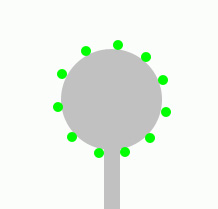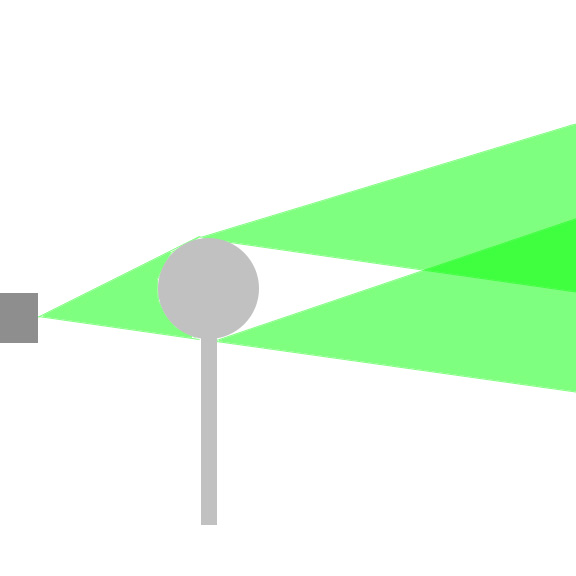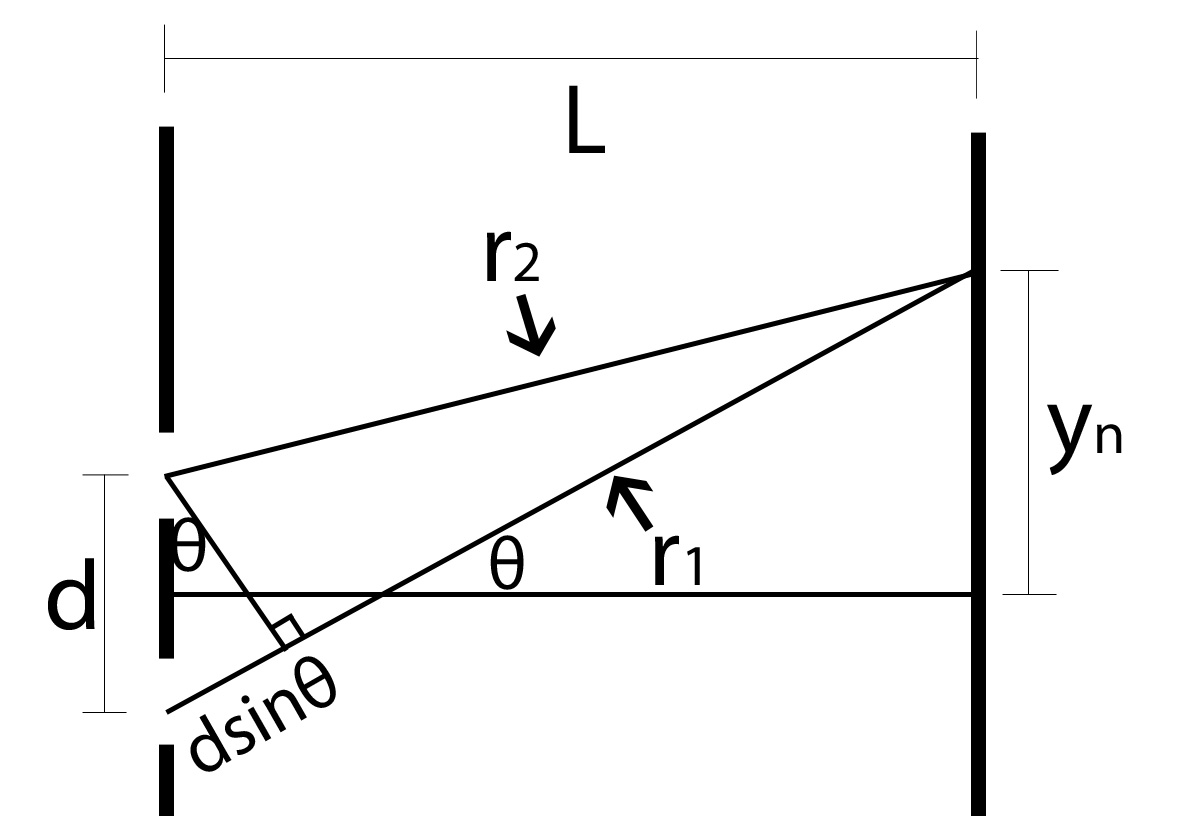This is a variation of Young's Double Slit, in which light goes through two thin, parallel slits. When light goes through, the light will diffract, or 'bend.' When light touches the edges of the slit, it is treated as a new source of light, as described by Huygen's Principle.


These two cone-like light sources will expand into the other, and will interfere. Where the light is completely 'in phase' it will constructively interfere, leading to bright fringes. Where the light is 180 degrees out of phase, the light will constructively interfere.

From this, Young's Double Slit can be understood through trigonometry.

| variable | meaning |
| d | distance between slits |
| θ | angle |
| n | fringe observed |
| r1 | distance between slit one and n |
| r2 | distance between slit two and n |
| yn | distance from center axis and fringe observed(n) |
| L | distance between slits and screen |





Except for dark fringes where:


According to Babinet's principle, the diffraction pattern of an opaque object will be identical to the diffraction pattern of a hole of the same shape and size, with the exception of the intensity of the light.
This means that a piece of wire or hair will be identical to two slits with the same distance 'd' as the hair. Using this, the width of a piece of hair can be calculated by finding the value of d.
See our tips page, for advice and notes on how to set up the low cost optical bench here.